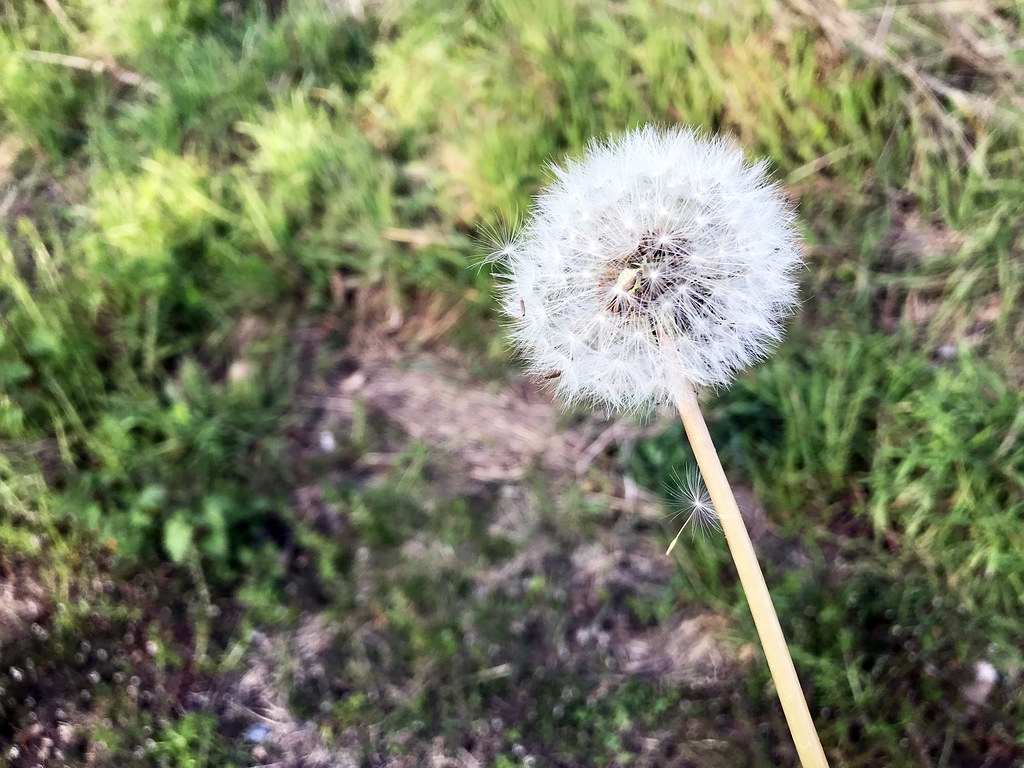Hay Fever Statistics UK

Key Hay Fever Statistics
- Around 20% of UK residents suffer from hay fever
- In 2018, more people said they suffered from hay fever than almost any other health condition
- The UK is currently tied with Sweden for the most hay fever sufferers in the world
- In 2014, 15% of all asthma deaths with exacerbating features saw hay fever as a contributing factor
- Almost a fifth of rising UK antihistamine searches from the past five years were in connection with dogs, suggesting it’s not just us that pain ourselves over the pollen season
Hay Fever Suffering Statistics
Hay fever season is dreaded by sufferers around the world. But how many people in the UK suffer from hay fever?
Is that number increasing, and does the condition come with further health implications? Chemist4U has undertaken research into the subject in order to answer these questions and more and provide the most comprehensive and up to date UK hay fever study of 2022.
How Many People Suffer From Hay Fever In The UK?
According to NHS data, approximately 20% of UK residents are hay fever sufferers.
The results of a survey with a sample size of 2,245 respondents found that individuals aged 45-54 were most likely to be affected by hay fever allergies, with 25% of this age group claiming to have the condition.
Only slightly fewer people aged 35-44 were sufferers, with this figure sitting at less than half a percentage below the older age group’s, while 25-34-year-olds saw 23% of their number complaining of reactions to pollen.
Those who suffered the least appeared to be the youngest and eldest age groups surveyed, with just 19% of 16-24-year-olds saying they have a hay fever allergy, and 22% of 55-64-year-olds claiming the same.

Source: Global Web Index, Quarterly Survey, Q3 and Q4 data on health conditions in the UK and other locations
These hay fever statistics suggest that UK residents are more likely to complain of hay fever than of almost any other ongoing condition, including asthma, diabetes, high cholesterol, migraines, physical disabilities, skin conditions and sleeping problems.
The only categories that come close are mental health problems in those aged 16-19 and arthritis and high blood pressure in people aged between 55 and 64.
Hay fever is the most common of these conditions for both men and women, with female respondents suffering the most at 27%. 19% of men said they had a hay fever allergy by contrast. In women, the two next most common conditions were migraines and mental health conditions, while for men they were asthma and mental health issues.

Source: Global Web Index, Quarterly Survey, Q3 and Q4 data on health conditions in the UK and other locations
Compared to the Rest of Europe, What Percentage of People Have Hay Fever in the UK?
European hay fever statistics state that the countries with the largest number of hay fever allergy sufferers are:
- UK and Sweden: 23% each
- Poland and Spain: 21% each.
On the lower end of the spectrum, however, the countries with the lowest number of sufferers are:
- Russia: 5%
- Romania: 9%
- Portugal: 11%

Source: Global Web Index, Quarterly Survey, Q3 and Q4 data on health conditions in the UK and other locations
Compared to the Rest of the World, What Percentage of People Have Hay Fever in the UK?
Regarding the wider world, however, the UK sees only the fifth highest number of hay fever sufferers behind:
- Australia at 24%
- South Africa at 26%
- Japan and Brazil tied at 28%.
- The US is close behind us at 22%.

Source: Global Web Index, Quarterly Survey, Q3 and Q4 data on health conditions in the UK and other locations
Has Hay Fever Increased In The UK?
Reports suggest that between 2016 and 2017 alone, the number of adults claiming to have experienced bouts of hay fever rose from 26% to 31% - a leap of 19%.
According to the Telegraph, bouts of hay fever are increasing considerably in UK residents in mid-life.
There is currently no clear answer when it comes to the question of what is to blame for these increasing hay fever statistics.
Many scientists argue that children’s immune systems are no longer developing properly as a result of a reduced amount of time outside, meaning less exposure to endotoxins.
Greater exposure in early life may help to strengthen the ability to fight hay fever.
What Causes Hay Fever?
Hay fever is principally an allergic reaction to pollen, but it can also be triggered by other allergens such as dust mites, or the saliva and skin particles shed by animals.
The body’s immune system responds to the allergen as they would to a dangerous or poisonous substance, producing histamine and leukotrienes, inflaming the eyelids, nasal passage and sinuses and causing sneezing.
Pollen is the main trigger of hay fever and can be divided into several groups, each of which is prevalent at a different time of year. Among the most common are:
- Tree pollen - early spring
- Grass pollen - late spring and summer
- Ragweed pollen - autumn
Fungi and mould spores can also cause hay fever but may be present all year round depending on the type.
Hay fever caused by animal dander and dust mites will persist throughout the year but may become worse when windows are kept closed in colder winter months.

Pollen Count Statistics
Hay fever symptoms are at their worst when pollen counts are high.
Because sufferers are triggered by different types of pollen, the worst time of year for each individual person will depend on when the pollen count is highest for the plant that triggers their allergies.
Regional Pollen Count Statistics
Different types of pollen see higher or lower counts depending on the area of the UK in which they are found.
For example, grass pollen is at its most prevalent in the western and northern regions and is at its worst in June, while nettle pollen is most intense in the south and east, especially in both June and July.
Ash pollen is common right across the country, but the densest patches are in central and southern England and its effects are felt most in April.
UK Pollen Map
For detailed information about the regions of the UK most affected by different types of pollen, take a look at this UK pollen map from Chemist4U.
UK Pollen Calendar
Pollen from different plants affects the UK for most of the year, although October, November and December see extremely low levels.
This means that hay fever season in the UK starts in January and ends in September, though its height is in late spring and early summer.
Late winter and early spring see pollen count peaks for:
- Hazel
- Yew
- Alder
- Elm
- Willow
- Poplar
Late spring and early summer are peak times for:
- Birch
- Ash
- Plane
- Oak
- Pine
Midsummer is the worst time for:
- Grass
- Dock
- Mugwort
- Nettle
- Plantain
The plants with the longest pollen seasons are hazel, yew and alder trees along with grass and nettle.
Hay Fever Remedies Statistics
Antihistamines and other remedies can be taken to ease the symptoms of hay fever.
Medicines and other treatments can come in the form of tablets, liquids, hay fever nasal sprays and others besides.
Most Popular Hay Fever Products
Remedies taken in tablet form are the most popular when it comes to treatment for hay fever.
Usually, these can be bought over the counter and should be taken every four to six hours when needed to relieve symptoms, though there are also once-a-day options and other variations.
At Chemist4U, the 3 bestselling products are all hay fever tablets. The top 3 selling products for treating hay fever are as follows*:
- Phenergan 25mg (Promethazine Hydrocholirde) - 56 tablets
- Phenergan 10mg (Promethazine Hydrocholirde) - 56 tablets
- Phenergan Night Time 25mg (Promethazine) - 14 tablets
*Based on unique purchases from 1st March 2021 to 12th April 2022.

Antihistamines
Antihistamines are so named because they block the effects of histamine in the body, treating itching, sneezing and watery eyes but proving less effective against blocked or runny noses. Side effects of these medicines may include drowsiness.
While remedies containing antihistamines are used to prevent or reduce the severity of allergic reactions, drinking alcohol during hay fever season is likely to exacerbate any symptoms due to its histamine content.
Prescription antihistamine tablets
Prescription antihistamines continue to be some of the most popular hay fever remedies on the market, especially since the COVID-19 pandemic made obtaining prescription medications online simpler than ever before.
These medications are often stronger than their more readily available counterparts, which is why many allergy sufferers continue to choose them despite the extra effort required to go through a consultation with a prescriber.
Some of our most popular prescription antihistamines include:
- Fexofenadine 180mg tablets
- Xyzal 5mg tablets (Levocetirizine Dihydrochloride)
Non-prescription antihistamine tablets
If prescription remedies aren't for you, there are plenty of antihistamines available from pharmacies.
While you may still need to go through a short consultation with a pharmacist, it's often much quicker and easier to obtain these treatments and they can be much more cost effective in the long run.
Some of our most popular non-prescription antihistamines include:
- Piriton 500 tablets (Chlorphenamine Maleate)
- Chlorphenamine tablets
- Cetirizine tablets
Nasal Decongestants
Nasal decongestants help to soothe and reduce the swelling, blockages and running in the nasal passage that commonly occurs as a result of hay fever.
They usually contain corticosteroids, and may also cure itching, watery eyes.
It’s also possible to opt for more powerful nose drops, which should be used sparingly for shorter periods of time.
Side effects may include irritation and dryness of the nose, bleeding from the nose and an unpleasant taste in the mouth or an itchy rash around the nose, particularly if the spray is incorrectly used.
Corticosteroids can also be taken in tablet form.
Eyedrops
Brands such as Optrex produce eye drops to reduce the itching and swelling of the eyes that sometimes results from hay fever.
They often contain antihistamines and may also contain the anti-inflammatory ingredient Sodium Cromoglicate. Side effects may include stinging or burning sensations in the eyes.
Immunotherapy
Severe cases of hay fever may be treated by immunotherapy - remedies administered by a specialist doctor to desensitize the immune system in order to reduce symptoms.
This is usually done by taking small doses of the allergen over a three-year period to allow the body to adjust to its presence. The dose may be administered via injections, drops or a tablet that dissolves under the tongue. After the initial dose, others can be taken at home.
Sales of Hay Fever Products
Globally, 65% of hay fever remedies used are antihistamines, 29% are intranasal corticosteroids and 4% are types of immunotherapy. Just 1% of people use other treatments.
Source: Google Trends 2022
When looking at the search volume for Hay fever remedies Antihistamine is, perhaps unsurprisingly, a front runner.

Source: Google Trends 2022
The Google Search volume for hay fever is seen to have very high peaks and troughs when looking over the course of 5 years. The highest search points are found in June and July each year, when grass pollen hits its peak.
During December to January the search terms for hay fever decrease significantly, almost to none, as the pollen season is over.
Between 2016 and 2018, there was an approximate 54% increase of interest in the purchase of hay fever products, which correlated with the severe hay fever season in 2018, which was reported to be the worst in a decade as the result of the suddenness of the incoming period in May after a wet March led to a delay in the phenological Spring.
UK shoppers saw 21% of their number - around 10.7 million people - buy a hay fever product in the first three months of 2019.
The fastest growing markets were in nasal sprays and eye drops.
Types Of Hay Fever Statistics UK
Different pollens and other allergens affect sufferers at different times of the year. Each individual reacts to the allergen in question in different ways.
Most Common Types Of Hay Fever
95% of hay fever sufferers are allergic to grass pollen, making it the most common allergen.
Those whose immune systems are triggered by grass pollen may experience a runny or blocked nose, itchy or streaming eyes or an itchy mouth or throat.
Less common types of hay fever are those that see sufferers come out in hives or get headaches during hay fever season.
Extreme Cases Of Hay Fever
In extreme cases, sufferers can experience considerable swelling, itching and respiratory problems that have a severe impact on their day to day lives, sometimes causing them to take time off work or to seek specialist immunotherapy treatment.
80% of asthma sufferers say that their condition is triggered by hay fever, and where asthma is exacerbated by hay fever symptoms, there is the increased potential of a fatal attack.
According to the National Review of Asthma Deaths for the UK, in 2014, 15% of individuals who died after an asthma attack which was exacerbated by additional features did so while suffering from hay fever.
The only exacerbating condition featuring in more deaths from asthma was a viral or upper respiratory tract infection, at 28%.

Source: National Review of Asthma Deaths for the UK (2014 data)

Source: National Review of Asthma Deaths for the UK (2014 data)
Other conditions that may be worsened by hay fever are sleep-related problems, sinusitis and ear infections.
Time Off Work Due To Hay Fever
4 in 10 adults with hay fever say that their symptoms have made it difficult for them to do their job. As a result of this, 1 in 5 sufferers of hay fever has taken time off work when experiencing a bad bout.
Within a study group of 1,660 hay fever sufferers, 19% said they had called in sick as a result.
However, a third admitted to bending the truth about their reason for taking time off, as they were concerned that their employer would not consider it a valid reason.
Hay Fever Search Trends
Between 2017 and 2021, the search interest in hay fever increased 75%.
The peak of this interest was in June 2021. At their highest point, searches using the same term in 2020 were 38% lower.

Source: Google Trends
Google Search Trends
While the average search interest in hay fever over the last five years has been low on average when compared with that of conditions such as hypertension, arthritis, asthma and diabetes, the seasonal peaks that correspond with high pollen counts see huge spikes of interest, often taking figures above the levels of any other conditions.
The biggest spike we can see for hay fever searches in the past 5 years was in June 2021.
Source: Google Trends
However, this level of interest hits only a seventh of the levels enjoyed by other seasonal subjects such as barbeques and summer holiday trips.
Hay fever searches reach similar levels to searches for summer holidays yearly, however the only time they have ever come close to barbecue searches was also in June 2021.

Source: Google Trends 2022
When compared to France, Australia, Germany and the US, the UK sees hay fever-related topics being searched for significantly more regularly.
The average search interest surrounding this subject in the US is only 11% of that of the UK over the past five years.

Source: Google Trends 2022
Over the last five years, around a fifth of the total top rising UK searches surrounding antihistamines were on the subject of dogs.
Major rising queries over that same timespan included the top rising query relating to coronavirus, alongside:
- “Antihistamines coronavirus” (+5,000%)
- “How many antihistamines can you give a horse?” (+5,000%)
- “Is taking too many antihistamines bad?” (+5,000%)
- “How much antihistamine can I take in 24 hours?” (+5,000%)
- “Can dogs have antihistamines UK?” (+1,350%)
Twitter Conversation Trends
Feelings on Twitter surrounding the topic of hay fever tend to veer towards disgust and anger, with a considerable spike in the number of people expressing angry feelings about the matter in the summer of 2013. However, these numbers have since gradually declined year on year.

Source: Google Trends
Hay fever continues to be a seasonal issue for many people, and there is evidence that the condition is on the rise. The exact cause of this increase is yet to be confirmed, but scientists continue to seek answers. In the meantime, sufferers continue to purchase rising amounts of remedies in order to manage their symptoms.
Data References:
Answer The Public, “hay fever” questions
Asthma.org, “Pollen, hay fever and asthma”, April 2019 - https://www.asthma.org.uk/advice/triggers/pollen/
Chong and Chew, World Allergy Organisation Journal, 2018,
Crimson Hexagon, Twitter trends for hay fever (emotion detection), Monitor created in April 2019, covering Twitter data back to 2008
Global Web Index, Quarterly Survey, Q3 and Q4 data on health conditions in the UK and other locations
Google Trends, selected topics, past five years, 2019
Kantar, ‘Hay fever on the rise in the UK’, April 2018
National Review of Asthma Deaths (Royal College of Physicians), 2014
NHS Inform Scot, Illnesses and Conditions, ‘Hay Fever’, 2019
Pharmacy UK, Trouble ahead as hay fever incidence skyrockets, 2018 - https://www.pharmacymagazine.co.uk/trouble-ahead-as-hay-fever-incidence-rockets
Royal College of Physicians and Asthma UK, Study into Asthma Deaths In The Uk, 2014 (link in comments above)








